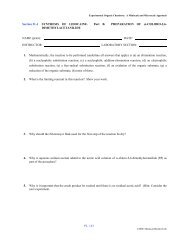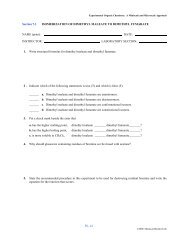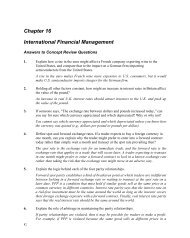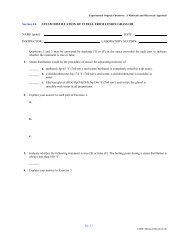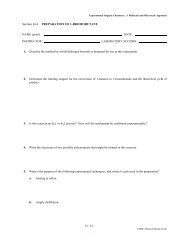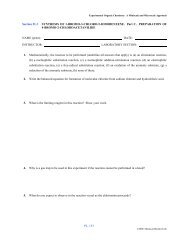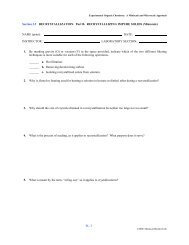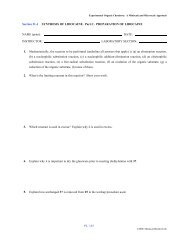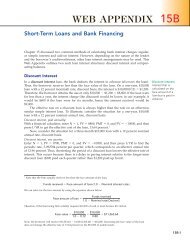WEB APPENDIX 12C
WEB APPENDIX 12C
WEB APPENDIX 12C
Create successful ePaper yourself
Turn your PDF publications into a flip-book with our unique Google optimized e-Paper software.
<strong>12C</strong>-6 Web Appendix <strong>12C</strong> Refunding OperationsPROBLEMS<strong>12C</strong>-1 Refunding analysis JoAnn Vaughan, financial manager of Gulf Shores Transportation(GST), has been asked by her boss to review GST’s outstanding debt issues for possiblebond refunding. Five years ago, GST issued $40,000,000 of 11 percent, 25-year debt. Theissue, with semiannual coupons, is currently callable at a premium of 11 percent, or $110for each $1,000 par value bond. Flotation costs on this issue were 6 percent, or $2,400,000.Vaughan believes that GST could issue 20-year debt today with a coupon rate of 8 percent.The firm has placed many issues in the capital markets during the last 10 years,and its debt flotation costs are currently estimated to be 4 percent of the issue’s value.GST’s federal-plus-state tax rate is 40 percent. Help Vaughan conduct the refundinganalysis by answering the following questions:a. What is the total dollar call premium required to call the old issue? Is it taxdeductible? What is the net after-tax cost of the call?b. What is the dollar flotation cost on the new issue? Is it immediately tax deductible?What is the after-tax flotation cost?c. What amount of old-issue flotation costs have not been expensed? Can thesedeferred costs be expensed immediately if the old issue is refunded? What is thevalue of the tax savings?d. What is the net after-tax cash outlay required to refund the old issue?e. What is the semiannual tax savings that arises from amortizing the flotation costs onthe new issue? What is the forgone semiannual tax savings on the old-issue flotationcosts?f. What is the semiannual after-tax interest savings that would result from the refunding?g. Thus far, Vaughan has identified two future cash flows: (1) the net of new issueflotation cost tax savings and old issue flotation cost tax savings that are lost ifrefunding occurs and (2) after-tax interest savings. What is the sum of these twosemiannual cash flows? What is the appropriate discount rate to apply to thesefuture cash flows? What is the present value of these cash flows?h. What is the NPV of refunding? Should GST refund now or wait until later?<strong>12C</strong>-2 Refunding analysis Tarpon Technologies is considering whether or not to refund a$75 million, 12 percent coupon, 30-year bond issue that was sold 5 years ago. It isamortizing $5 million of flotation costs on the 12 percent bonds over the issue’s 30-yearlife. Tarpon’s investment bankers have indicated that the company could sell a new25-year issue at an interest rate of 10 percent in today’s market. Neither they norTarpon’s management anticipate that interest rates will fall below 10 percent any timesoon, but there is a chance that rates will increase.A call premium of 12 percent would be required to retire the old bonds, and flotationcosts on the new issue would amount to $5 million. Tarpon’s marginal federal-plus-statetax rate is 40 percent. The new bonds would be issued 1 month before the old bonds arecalled, with the proceeds being invested in short-term government securities returning 6percent annually during the interim period.a. Perform a complete bond refunding analysis. What is the bond refunding’s NPV?b. What factors would influence Tarpon’s decision to refund now rather than later?



